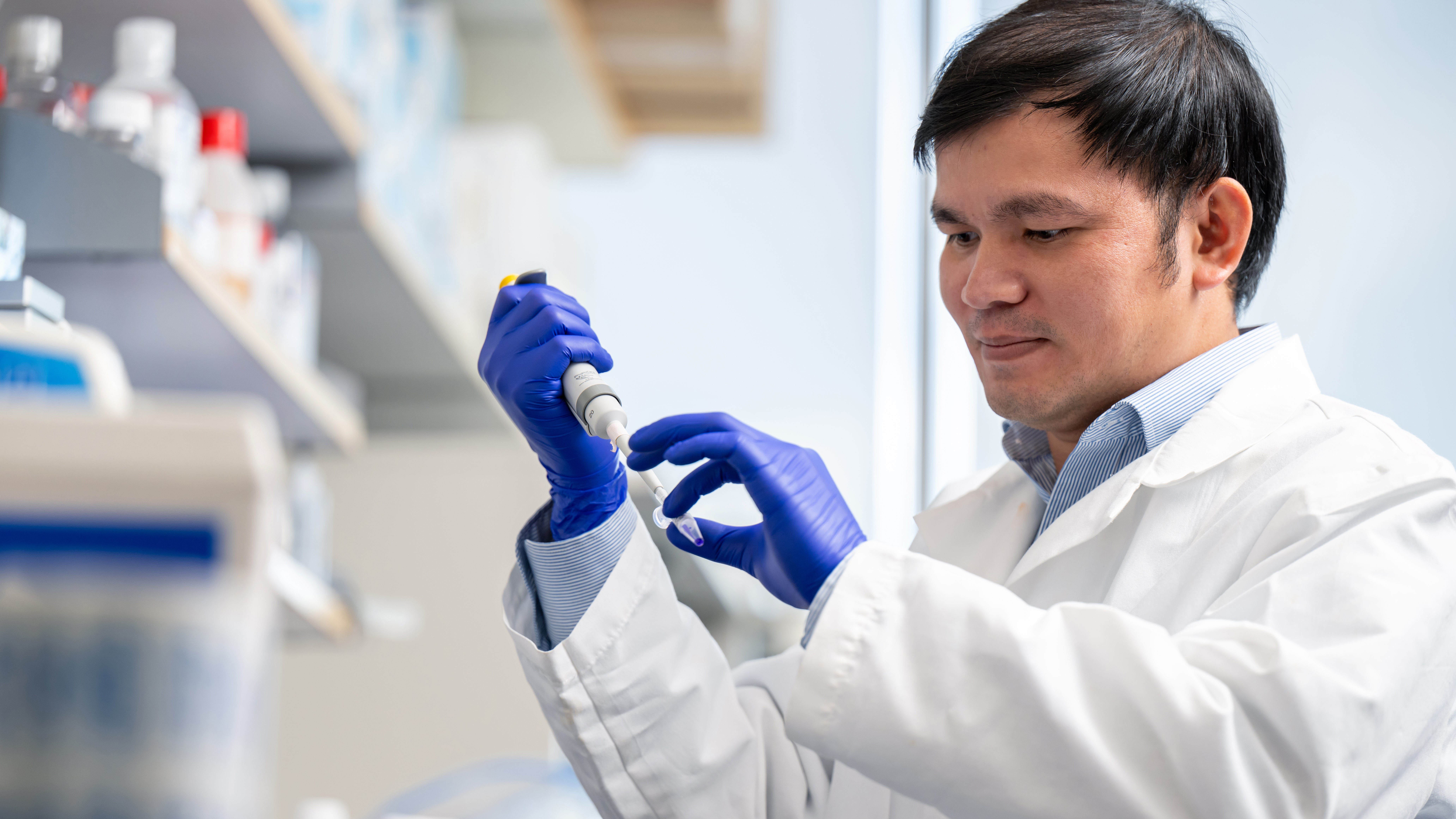
2 minute read
Retraining Cells to Replace Those Lost to Neurodegeneration
Many subtypes of neurons and glial cells make up the central nervous system (CNS), responsible for sight, cognition and movement. These cells are highly vulnerable to damage and disease, including blinding diseases of the retina like macular degeneration, retinitis pigmentosa and glaucoma, and debilitating brain and spinal cord illnesses like multiple sclerosis and Parkinson’s disease.
The novel research of Thanh Hoang, Ph.D., is a driving force behind efforts to move beyond treating the consequences of these devastating neurodegenerative disorders, to defeating them at the cellular level.
Dr. Hoang joined the U-M faculty in 2023 with a dual appointment in Ophthalmology and Cell & Developmental Biology and is an affiliate of the Michigan Neuroscience Institute. He has developed a highly efficient method of reprogramming mature retinal glial cells into multiple types of neurons. The therapeutic potential of repurposing cells to replace those lost to neurodegeneration is receiving national attention and grant support.

A grant from the Retina Research Foundation will support the next phase of this work in retinal dystrophies: gaining a deeper understanding of the molecular mechanisms driving the generation of different cell types during retinal development and regeneration.
“We hypothesize that the transcription factor insulinoma-associated protein, Insm1, plays a role in retinal cell generation and regeneration,” he explains. “With this grant we will examine the impact of both increasing and decreasing the function of Insm1 in order to capture a snapshot of cell generation in retinal development and regeneration and test our theory.”
With a second grant, the McKnight Foundation Neurobiology of Brain Disorders (NBD) award, Dr. Hoang will apply his cell reprogramming method to other glial cells in the CNS that share characteristics with retinal glial cells. Here too, the long-term goal is to inform future cell-based therapies, but this project addresses neurons damaged in Parkinson’s disease.
“A better understanding of how CNS neurons are formed during normal development is critical to continuing to hone our approach to regenerating them from mature cells,” notes Dr. Hoang. “We hope to develop more controlled and universally applicable methods, and eventually translate what we achieve into human therapeutics.”
The publication of a commentary by Dr. Hoang in the journal Nature illustrates his impact on this emerging field of study. The article has begun an important dialog on the development of more stringent, standardized criteria to guide this pivotal new frontier in neurobiology.










